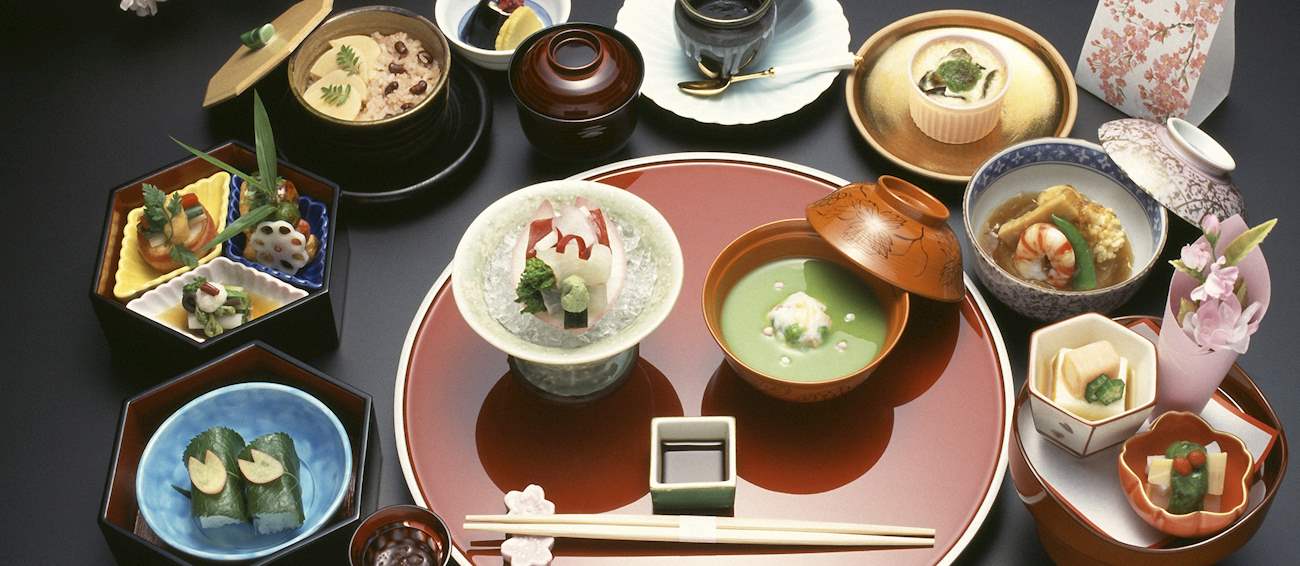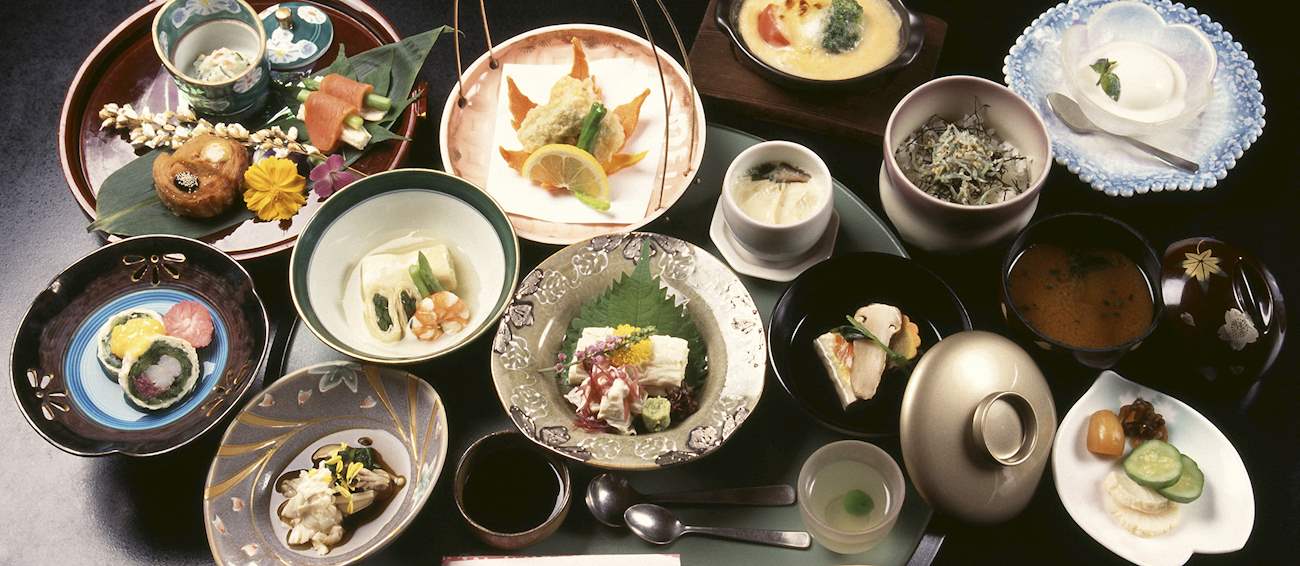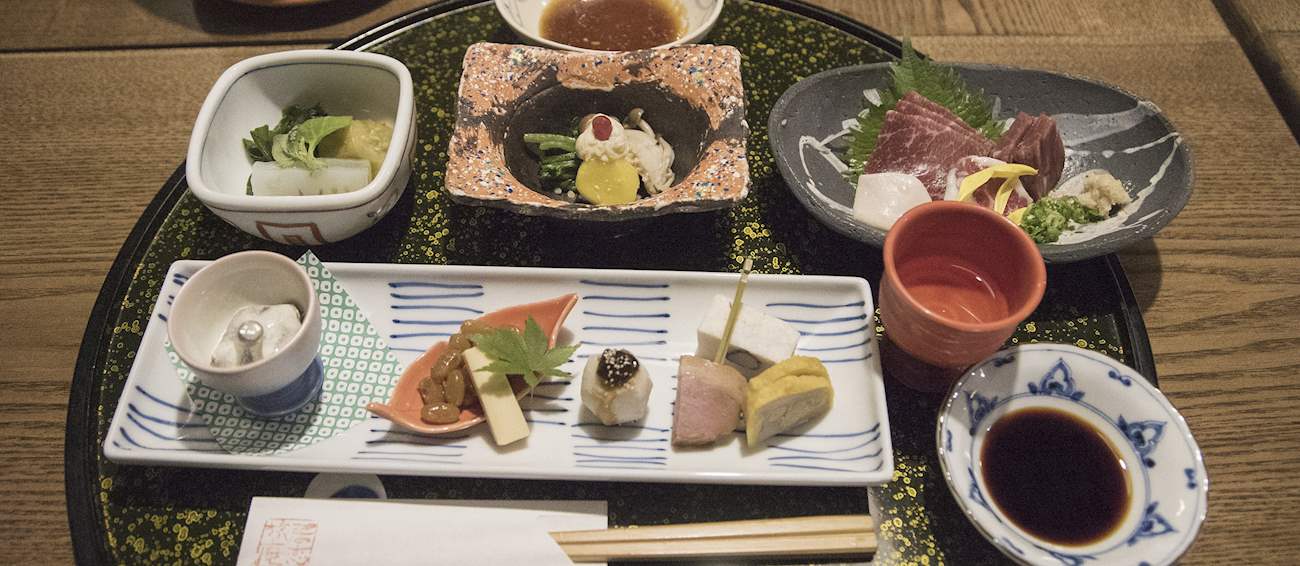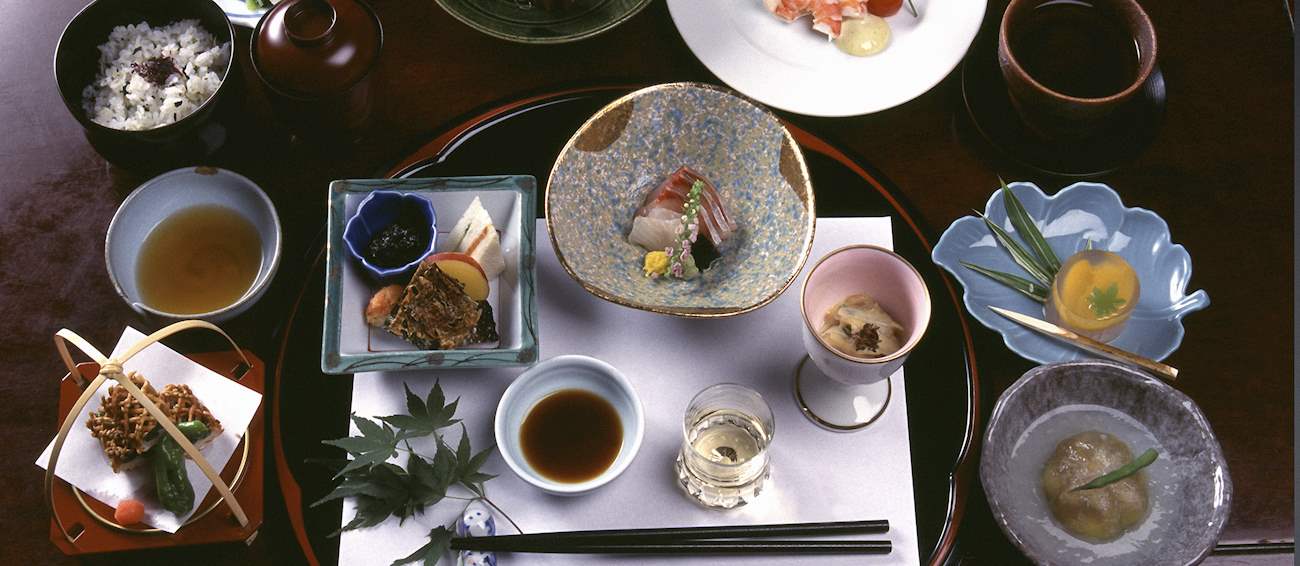Kaiseki
(懐石, Stones in the Bosom, Multi-Course Japanese Dinner)
Kaiseki is a traditional multi-course dinner that can consist from 6 to 15 different types of food, such as mukouzuke (sashimi), suimono (soup), kuchitori (a small side dish), shiizakana (appetizers and sake), yakimono (grilled fish), and kounomono (pickles), among others.
Kaiseki restaurants commonly offer a private room, which often comes with a beautiful view of Japanese gardens. The dishes are usually small and characterized by their presentation on a plate, making kaiseki similar to the Western haute cuisine.
The word kaiseki means hot stone in a kimono fold, referring to a popular belief that Zen priests would place hot stones wrapped in towels close to their stomach in order to cure the hunger pains during their daily prayers. In the beginning, kaiseki was a vegetarian dish served during tea ceremonies, since it was believed that the tea would taste better if the guests were not hungry.
Today, kaiseki is not only vegetarian, as it might include meat and fish dishes as well, with special emphasis placed on the freshness of the ingredients. With a huge variety of flavorful, artistically arranged dishes, it is no wonder that a kaiseki dinner may cost up to $500, excluding drinks.
Pairing tips
Matcha
Matcha is a Chinese green tea variety that is unique for its harvesting, processing, and preparation methods. Three or four weeks before the harvest, the bush ... Read more





















